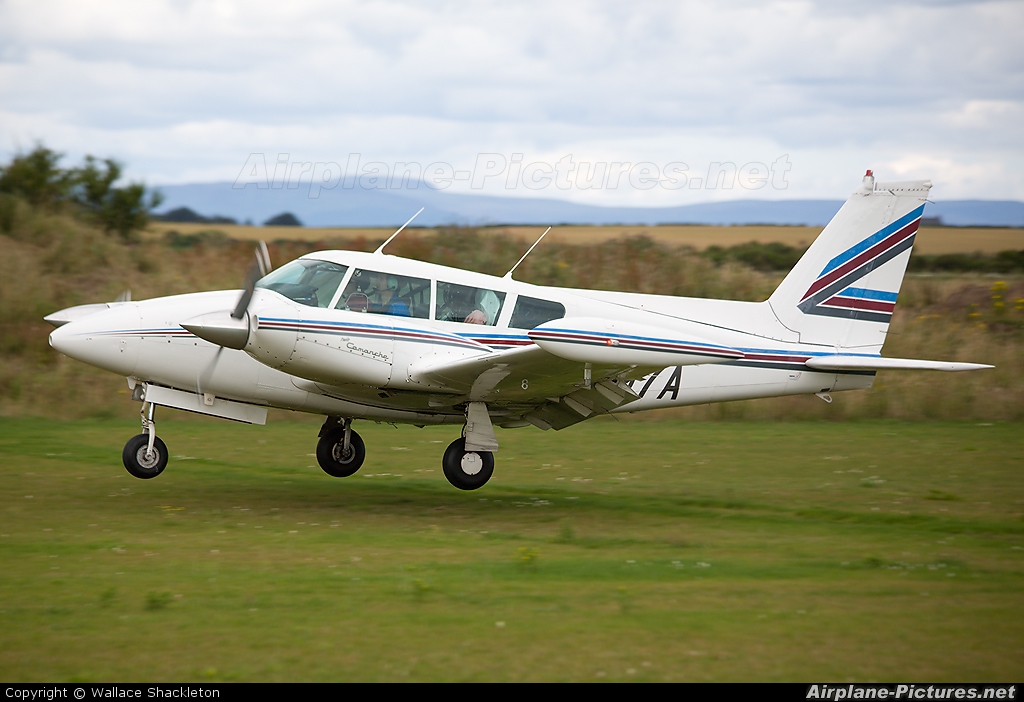At first, we briefed everything we would do, then went out and did it without any surprises. After that, Jim started trying to sneak in simulated engine failures at increasingly difficult times.
The first recognition of a real failure is a sudden yawing movement of the nose toward the failing engine. For most pilots, it is a simple thing to detect and correct. You almost instinctively step on the rudder puddle to keep the nose where it was. The sneakiest shutdowns are when both engines are at idle. You don't get that big yaw motion.
Then you go through a process starting with the mixtures. Push both all the way forward, then push both prop controls all the way forward, then both throttles all the way forward. This will usually require having the rudder pedal smashed all the way to the floor. Then you start with the throttles and work your way back across. You think to yourself, dead foot - dead engine. As I said, you have mashed the rudder pedal on the side of the good engine to the floor. The other foot is not doing anything. That is the dead foot and is on the side of the dead engine.
You pull the throttle on that side all the way back to idle. If it does not get very quiet, you have selected the correct throttle. Then you take the prop control on the same side and pull it all the way back to the feather position. This streamlines the prop on the dead engine, if you have not messed that up.
The next move is critical, because it will shut down the good engine, if you get it wrong. Pull back the mixture control on the dead engine side. This is how you cut off all fuel flow and shut an engine down. This all has to be done without undue delay, but should not be done too rapidly, to confirm that you are not shutting down the good engine. If you did, you would not be the first person to do so. At the point where you have selected the correct throttle and start bringing it back, the instructor intervenes and sets all the engine controls for the simulated dead engine up in a zero thrust configuration.
This is what makes a multi-engine instructor age too soon. You also have to make sure you are maintaining your altitude and enough airspeed so that you do not stall the wings. Twins with an engine shut down do nasty things when the wing stops flying.
Eventually, you fly the airplane back to the airport and land in this configuration. You may trim the rudder to take some of the pressure off the foot you had been mashing to the floor. As power on the good engine is reduced, the rudder pressure necessary to keep the nose straight ahead is reduced. The problem with this, is if the instructor tells you to go around. When you bring the power back in on the good engine, the nose will yaw again, requiring more rudder deflection.
I'm wondering what I forgot, but you are probably wondering when I am going to move on to some good stuff.
One night, in the winter, Jim and his wife were going to Batavia New York, somewhere near Buffalo, to pick up a dog. We used some of my training time to fly that trip. Since I had an instrument rating also, I had to be able to fly instruments and cross country in the twin.
It was a blustery, snowy night along Lake Erie and the landing at Batavia was one of those you remember all your life. The Aztec was bucking and bouncing and as I tried to keep the attitude steady with both hands, Jim was working the throttles. If Jim's wife, Keri, was scared, she was not saying anything. Long story short, we picked up the doggy and returned to Butler.
We had two twins for training, a Twin Comanche and an Aztec.
Twin Comanche
Aztec
The Twin Comanche was smaller, with less engine power and it was a little trickier to fly than the Aztec. It was the Comanche airframe, with 2 engines hung on the wings. It had a more violent reaction to a wing stall at minimum control speed with an engine inop. and it was tougher to land, I think because of the wing, the short main gear and the long nose gear. One of the things we tried to make the landings better was to land at less than full flaps.
The Aztec was just a big marshmallow of an airplane to fly. That big fat wing was kind of like the Cherokee.
The Aztec was just a big marshmallow of an airplane to fly. That big fat wing was kind of like the Cherokee.

Good description Denbo, I remember it all very well
ReplyDelete